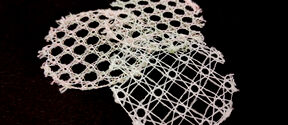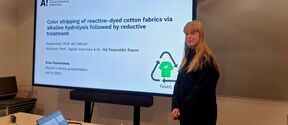Lignin: A Sustainable Solution for Future Energy Storage

The goal of the SmartRecovery project funded by Business Finland was to promote the transition of Finnish industrial sectors to bio-based solutions by accelerating the commercialisation of lignin and enabling the market entry of new lignin-based products and materials.
Currently, the commercially available lignin is challenging to utilize in various applications in its raw form, as it requires modification. For example, lignin can be chemically modified or transformed into nanoparticles to be better suited to applications. These are good options, but they also increase costs.
The LigniSmart recovery technology allows isolation of kraft lignin in a form that can be utilised in different applications. Lifecycle assessment indicates that the process produces less chemical waste than the current lignin precipitation methods, thus making the new method more environmentally friendly.
Lignin isolated using the LigniSmart technology is particularly suitable for carbonisation and as hard carbon in energy storage applications
The lignin developed in the project behaves uniquely at high temperatures. Lignin recovered using the developed technology is stable and, unlike commercial lignin, it does not foam during carbonisation. As a result, the lignin remains in powder form even after heating. This is a significant advantage in the further processing of hard carbon, as it eliminates the laborious and energy-intensive grinding phase.
"Initial results show that the novel hard carbon performs as well as commercial hard carbon in Li-ion battery applications. The results are very promising for various energy storage applications," says Research Manager Katariina Torvinen.
Faster quality control for industrial conditions
During the project, lignin analytics were also developed. Traditional lignin analytics are labour-intensive and time-consuming. To ensure a consistent lignin product, techniques to quickly and easily evaluate the quality of lignin are needed.
Fundamental knowledge was also gained about the internal structure of lignin particles in both laboratory and industrial conditions.
"The SmartRecovery project has allowed us to use advanced research methods, such as synchrotron radiation, to study lignin samples that are important to the industry. The results of the work support the development of lignin characterisation methods and are also interesting from the perspective of lignin interactions and precipitation behaviour," says Academy Research Fellow Paavo Penttilä from Aalto University.
The project results will be presented at a public seminar called "Lignin in focus: Key results, industry cases, and future opportunities" on 3rd of April 2025 (Innopoli2, Tekniikantie 14, Espoo).
The lignin-themed seminar is being organised by CLIC Innovation and 4R Ecosystem, the SmartRecovery project, and the ExpandFibre Transition Phase 2025.
The two-year SmartRecovery to boost lignin commercialization -project was funded by Business Finland and members of the business consortium: Metsä Fibre, Fortum, Chempolis, LignEasy, Andritz, Natural Element Oy, Prosolve, and Prefere Resins.

Read more news

Smart textiles are reshaping our understanding of materials – and interspecies communication
The PAST-A-BOT research project, funded by the European Research Council (ERC), is developing soft, intelligent textiles that could one day function as rescue robots, sound-sensing agricultural fabrics, or assistive clothing. At the same time, the project aims to rethink the way we approach materials research.
Master’s student showcases efficient color stripping of cotton fabrics
On December 9, master’s thesis student Elsa Vuorenmaa from the Textile Chemistry Group presented the results of her research on color stripping of reactive-dyed cotton fabrics.
Future makers research batteries, cryptography and plastic recycling
The Technology Industries of Finland Centennial Foundation awarded 3.5 million euros in research funding to eight projects, five from Aalto University.






